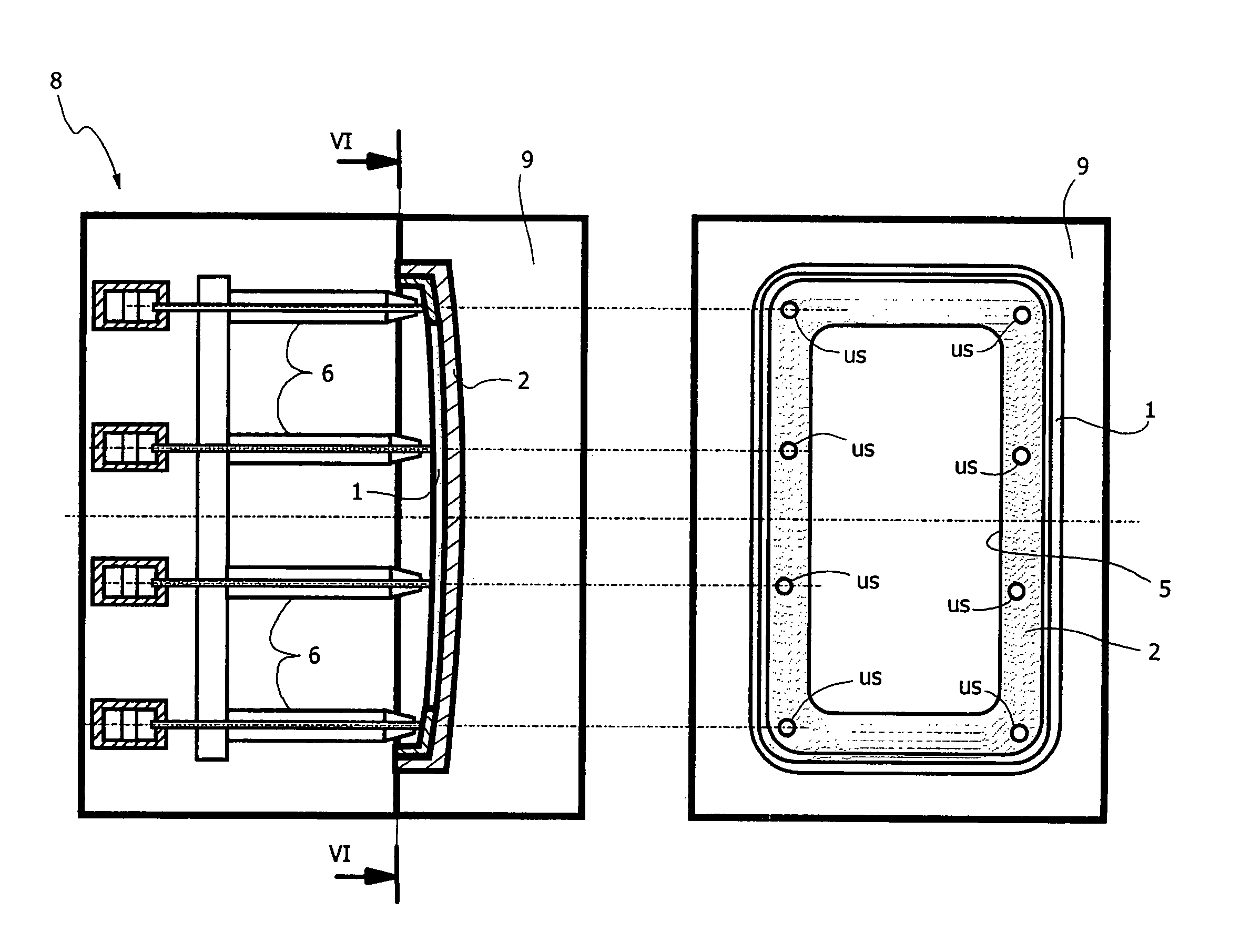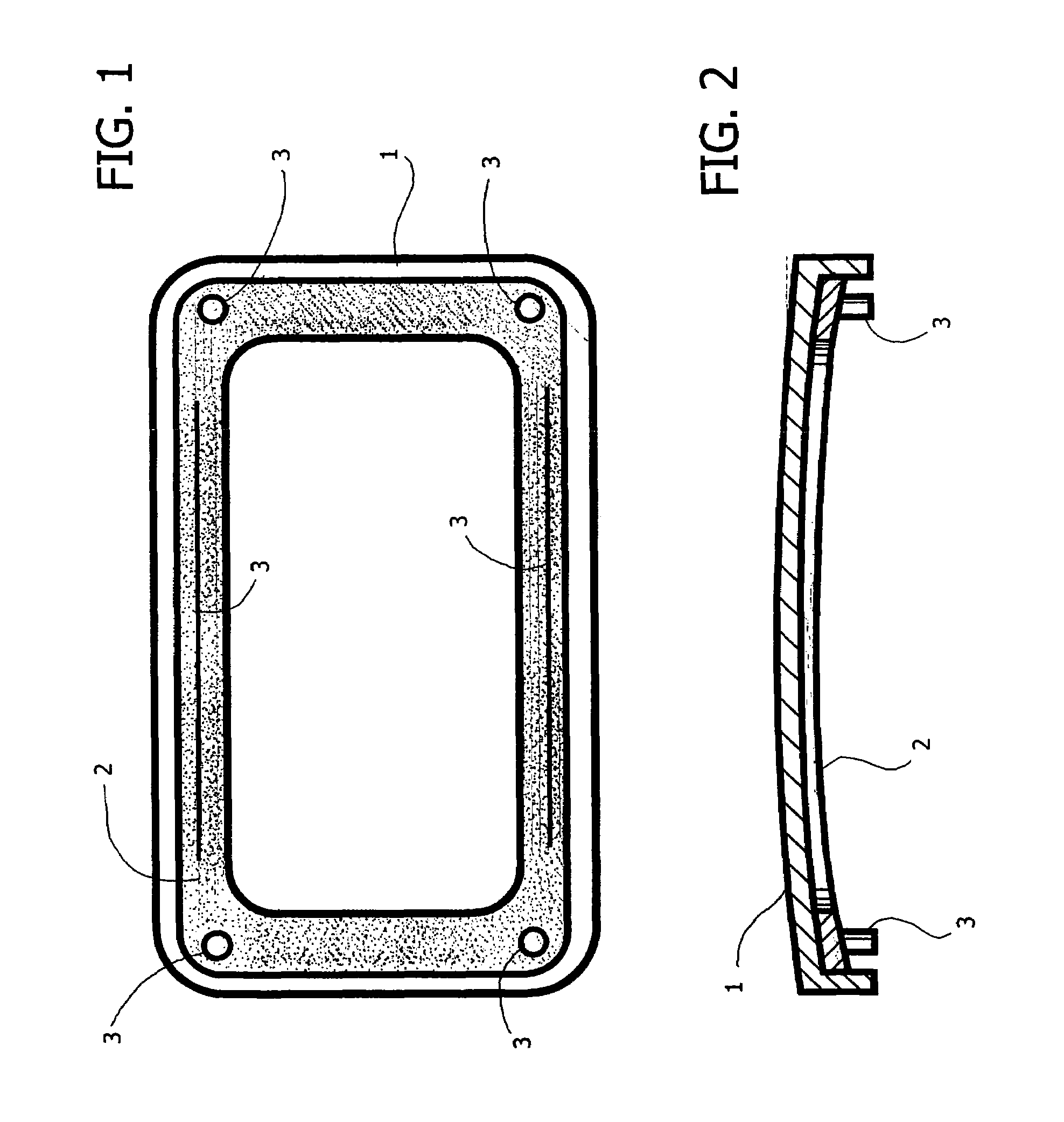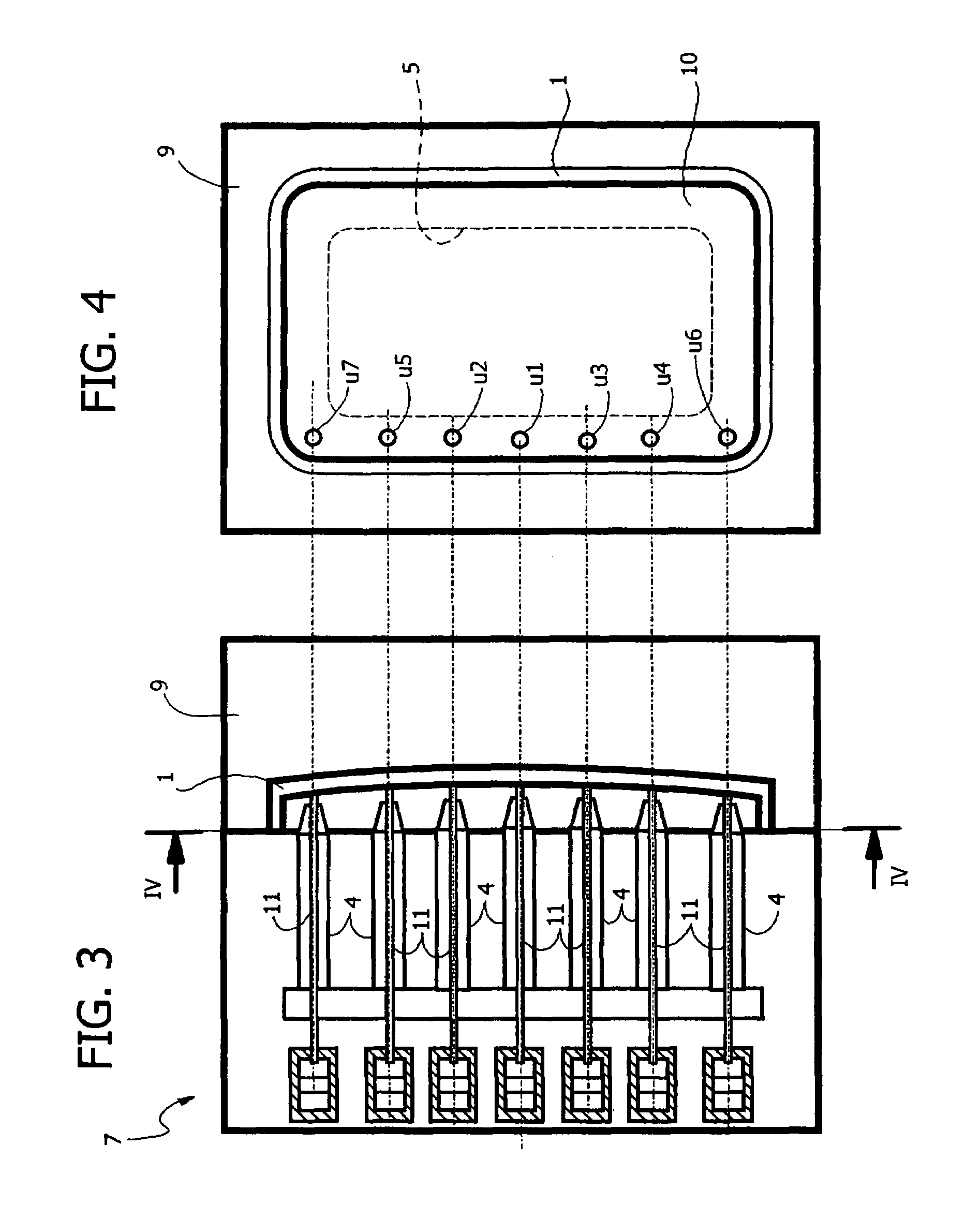Process for the production of plates made of transparent plastic material with non-transparent areas
a technology of transparent plastic and non-transparent areas, applied in the direction of molds, household objects, applications, etc., can solve the problems of affecting the optical and mechanical properties of the plate, unable to achieve sufficiently high quality, and unable to eliminate some typical aesthetic and optical defects, etc., to achieve optimal optical and mechanical properties, and low stress
- Summary
- Abstract
- Description
- Claims
- Application Information
AI Technical Summary
Benefits of technology
Problems solved by technology
Method used
Image
Examples
Embodiment Construction
[0029]FIGS. 1 and 2 of the annexed plate of drawings are schematic representations of an example of a product made of bi-component plastic material obtained with the process according to the invention.
[0030]The product is constituted by a plate 1 made of transparent plastic material, typically polycarbonate, on the dorsal face of which is applied a perimetral frame 2 made of non-transparent plastic material, formed with appendages and projections 3 usable for the assembly of the plate in the condition of use.
[0031]The process for the production of such a bi-component product envisages two successive steps, described in what follows with reference to FIGS. 3, 4 and 5, 6, respectively.
[0032]It should be noted that the process according to the invention can be implemented on a press of the stack-mould type with rotating central surface.
[0033]In this case, two moulding stations will be provided, the first designated by 7 and the second by 8, in a position corresponding to which a mould ...
PUM
| Property | Measurement | Unit |
|---|---|---|
| transparent | aaaaa | aaaaa |
| peripheral area | aaaaa | aaaaa |
| non-transparent | aaaaa | aaaaa |
Abstract
Description
Claims
Application Information
 Login to View More
Login to View More - R&D
- Intellectual Property
- Life Sciences
- Materials
- Tech Scout
- Unparalleled Data Quality
- Higher Quality Content
- 60% Fewer Hallucinations
Browse by: Latest US Patents, China's latest patents, Technical Efficacy Thesaurus, Application Domain, Technology Topic, Popular Technical Reports.
© 2025 PatSnap. All rights reserved.Legal|Privacy policy|Modern Slavery Act Transparency Statement|Sitemap|About US| Contact US: help@patsnap.com



